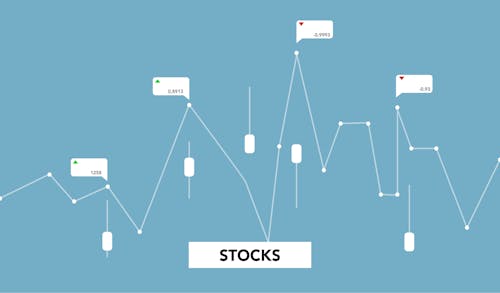 Image Source:
Image Source:
Investing in stocks is a cornerstone of building wealth, but not all stocks are the same. Understanding the different types of stocks and their characteristics can help investors make more informed decisions, balance their portfolios, and manage risks effectively. Below, we’ll explore the most common types of stocks and what makes them unique.
1. Common Stock vs. Preferred Stock
Common Stock: This is the most well-known type of stock. Owning common stock gives investors a share in the company’s profits and, often, voting rights in corporate matters, such as electing board members. Common shareholders are last in line for claims on the company’s assets in case of liquidation but may benefit from capital appreciation and dividends.
Preferred Stock: Preferred stockholders receive dividends before common stockholders and have priority during bankruptcy, but they typically don’t have voting rights. This type of stock is ideal for investors looking for steady, reliable income rather than voting influence or large growth potential.
2. Growth Stocks vs. Value Stocks
Growth Stocks: These are shares of companies expected to grow faster than the overall market. Growth stocks typically do not pay dividends, as companies reinvest earnings to fuel expansion. They are favored in times of economic growth and low-interest rates. Tech companies are a classic example.
Value Stocks: Value stocks are often priced lower than their financial performance suggests. These stocks may be undervalued by the market but offer strong fundamentals, including consistent dividend payments. They tend to perform better during economic recoveries, when investors are seeking stable, income-generating assets.
3. Income StocksIncome stocks are known for providing regular dividends that are higher than the market average. These are typically large, stable companies, such as utilities, that generate reliable profits. Income stocks are ideal for conservative investors who prefer steady returns over high-risk capital gains.
4. Blue-Chip StocksBlue-chip stocks represent well-established companies with a long history of financial stability, reliable earnings, and consistent dividend payouts. These companies, such as Microsoft and Coca-Cola, tend to have large market capitalizations and are popular among conservative investors who seek low-risk investments, particularly during uncertain economic periods.
5. Cyclical vs. Non-Cyclical Stocks
Cyclical Stocks: These stocks follow the economic cycle, meaning they tend to perform well during economic expansions and poorly during recessions. Industries such as consumer discretionary (e.g., luxury goods) and travel often fall into this category.
Non-Cyclical Stocks: These stocks, also known as defensive stocks, are less affected by economic cycles because they represent industries that provide essential goods and services, such as healthcare and utilities. They are reliable performers during economic downturns.
6. Defensive StocksDefensive stocks typically belong to companies that provide essential products and services, such as food, healthcare, and electricity. These stocks are less volatile and offer consistent returns regardless of market conditions, making them ideal for protecting a portfolio during a bear market or economic recession.
7. IPO StocksInitial public offering (IPO) stocks are that are publicly traded for the first time. These stocks can be highly volatile, with significant potential for both gains and losses. IPOs can be exciting opportunities, but they also carry the risk of being untested in the public market.
8. Penny StocksPenny stocks are shares of very small companies that typically trade at less than $5 per share. These stocks are highly speculative and often subject to extreme volatility. Many penny stocks trade on over-the-counter (OTC) markets, which can lack the liquidity and transparency of major exchanges. Due to their speculative nature, they are considered high-risk investments.
9. ESG StocksEnvironmental, social, and governance (ESG) stocks focus on companies that prioritize sustainability, ethical management, and social responsibility. ESG stocks are becoming increasingly popular among investors who want to align their investments with their values. These stocks can offer a balance of financial return and social impact.
10. Sector and Industry StocksSector stocks represent broad areas of the economy, such as technology, healthcare, or finance. Investors can further specialize by focusing on specific industries within those sectors, like biotechnology or renewable energy. Sector investing allows for targeted exposure to areas of growth or stability, depending on the investor’s goals and risk tolerance.
ConclusionBy understanding the different types of stocks, investors can better tailor their portfolios to meet their financial goals and risk preferences. Whether you’re looking for growth, income, or stability, there are stocks to match your investment style.More By This Author:

